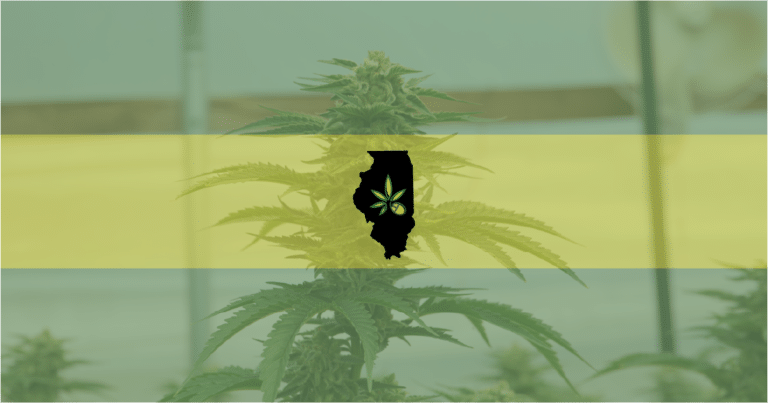Montana lawmakers have unveiled plans to introduce a recreational marijuana market to the state, and it differs greatly from the ballot initiative voters passed last November.
Recreational Marijuana in Montana: A Look at the Legislative Plan
A massive, 264-page draft bill from Missoula Rep. Mike Hopkins (R) has been passed around the Montana State Capitol this past week, outlining the plan to implement an adult-use marijuana program. This comes months following the 2020 election, where Montana voters passed a ballot initiative to legalize cannabis.
In addition to legalization, the measure also set the guidelines for Montana’s legal recreational marijuana program. Voters approved:
- Legalizing the possession and use of marijuana, up to one ounce, for people over the age of 21.
- A 20% tax on sales of cannabis products.
- Allowing individuals to grow up to four cannabis plants and four seedlings for personal use.
- Giving the Montana Department of Revenue the responsibility of regulating the cultivation, production, transport, and sale of marijuana.
- Allocating marijuana tax revenue to conservation programs, veterans programs, drug addiction treatment, local authorities, healthcare workers, and the state’s general fund.
Despite over 340,000 Montanans voting in favor of these terms, the bill carried by Rep. Hopkins widely strays from November’s ballot initiative. Still, licensing for the program is set to begin by October, with sales on recreational cannabis kicking off in January 2022. Hopkins is confident that Montana’s would-be program—born from a four-month long collaborative effort between state lawmakers and Gov. Gianforte’s office—will be completely ready to go from the kick off.
“This one, you’re going to be able to push the start button and it’s a fully functioning, operational marijuana system for the state of Montana,” mentioned Rep. Hopkins.
And while Montana legislature’s draft bill maintains the ballot initiative’s 20% sales tax, the allocation of tax revenue has skewed. The first $6 million in tax revenue will be given to Gov. Gianforte’s HEART fund to support drug addiction treatment, with a significant portion of that being directed toward the Indian Health Service and disease prevention for over 70,000 Native Americans.
The ballot initiative passed back in November dedicated roughly half of all cannabis tax revenue to the conservation of parks and trails, a figure that was chopped down significantly in Rep. Hopkins’ bill. Programs related to the conservation of Montana animals, trails and parks just get a combined 12% of remaining revenues. The state’s general fund—which was only allocated 10% of cannabis tax dollars in the November ballot initiative—receives 88% of all revenues in the bill Montana lawmakers are considering.
Conservation groups have already indicated that they’ll be campaigning in opposition to the funding allocations outlined in the bill. Frank Szollosi of the Montana Wildlife Federation said, “Now comes the shell game with voter-approved conservation dollars. . . there’s just no sound fiscal rationale to contradict the will of Montana voters. … These accounts help keep families on their ranches into the future, increase hunter-angler access and improve our overtaxed state parks.”
In addition to changes in how tax dollars are used, Rep. Hopkins’ bill also kills any plans for home growing, despite Montana voters approving four cannabis plants and four seedlings for personal use. In its place, the proposed plan has new THC potency caps, as well as bans on logos and advertising.
Describing the THC caps, Rep. Hopkins said, “There will be a limit of a little over 39%, is how it works out. It may display in the bill as 35% potency within the flower itself.”
Montana dispensary owners have already expressed concerns over the THC caps. Zach Schopp, of the Seed of Life Labs medical dispensary, asked, “Why would someone come to us, pay a 20% tax to buy my product, when there’s a better product out on the streets?”
Dispensary owners have also criticized the proposed logo ban. In the bill, all cannabis products must be presented in plain black and white packaging. Michael Zens, co-owner of High Roads Edibles, is afraid of how the packaging restrictions will hinder the customer experience.
“With logos, images or distinguishing marks removed from packaging, consumers will no longer have an easy way to find products that meet their preferences. We understand that products shouldn’t appeal to children, but we feel this approach to packaging will hurt consumers,” said Zens.
Structuring and Regulating Montana’s Cannabis Market
Under the proposed measures, responsibility of Montana’s medical marijuana program will shift from the Department of Public Health and Human Services to the Department of Revenue, which would be heading both the medical and recreational cannabis programs.
Medical cannabis dispensaries will get priority in entering the recreational market. Current license holders will get an 18-month advantage without outside competition, which was extended from the initially proposed 12-month head start. Mike Hopkins feels the additional lead is earned, saying,
“Administrative and staffing fees are also addressed in Rep. Hopkins’ bill, with $6.1 million covering 51 employees for the program across 2022 and $7.7 million for 68 employees in 2023. Similar fees on the municipal level can be covered by an additional tax.” Hopkins explained, “On the local side, there is an up to 5% local option tax for them to cover the costs of their sides of administration and oversight.”
The Future of Recreational Weed in Montana
Pro-cannabis politicians, advocates, and business owners have all spoken out against key changes from the initiative passed in November to the bill Montana lawmakers are pushing to pass today. J.D. Peterson, CEO of the Montana Cannabis Guild, said, “No doubt we will be going over the package with a fine tooth comb. It is likely we will be working to offer some amendments to the package, especially as it relates to offering restorative justice to those who were victims of the punitive anti-marijuana measures of the past.”
Despite the bill’s shortcomings, it’s great progress for a state surrounded by recreational legalization deserts like Idaho, Wyoming, and South Dakota. The Bureau of Business and Economic Research at the University of Montana projected that legal marijuana sales in the state could eclipse $250 million by the end of 2025, which would bring in a predicted $52 million in cannabis tax revenue. Rep. Hopkins has even suggested that those predictions might be a bit conservative.
Though key lawmakers are confident the bill will pass, critics of the legislative plans are hoping to make some changes.
“I do anticipate a lot of amendments in the House and they’re going to shred every one of them when they go to the Senate. Senate amendments are the only amendments that matter,” said Peterson of the Montana Cannabis Guild. Continue checking back at The Weed Blog to stay updated on the progress of Montana’s legal cannabis program.
Additional Resources:
At The Weed Blog, we strive to produce the latest online news resources regarding marijuana. We also review various strains of cannabis or other edible counterparts. We are committed to helping you find valuable information about marijuana on our website. With marijuana laws constantly changing, learn from us what you can do to promote activism in your area. Otherwise, consider these other top-tier articles regarding cannabis:
Past Marijuana Use Will Not Be Held Against Immigrants With Proposed Bill
Oklahoma’s Dispensary Licenses Fall For First Time Since Opening of Medical Cannabis Market









